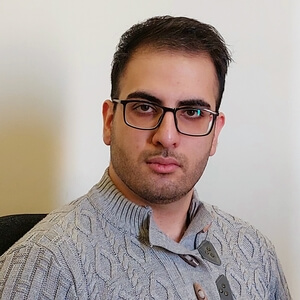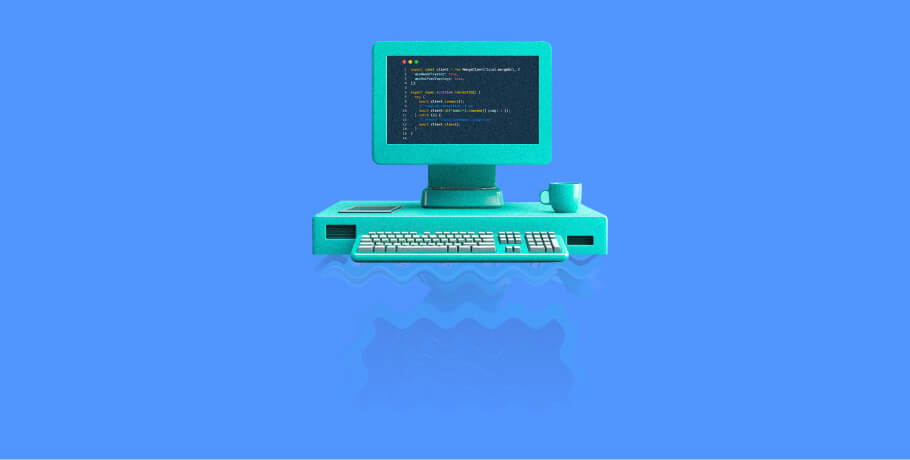We look at the career path and the skills required of full-stack software engineers today, with insider insights from EPAM Anywhere’s Software Engineer Armin Felahatpisheh.
A full-stack software engineer is a "Swiss Army Knife" kind of engineer who can do it all — backend, frontend, and architecture components of the software product. It’s the combination of skills that makes these professionals a coveted breed.
What does it take to become a full-stack engineer? Which hard and soft skills should they demonstrate, and what steps do they take to become a senior engineer? Let's find out.
What does a full-stack engineer do?
Essentially, a full-stack software engineer does both frontend and backend development. What distinguishes them from engineers who deal exclusively with the frontend or backend is the ability to "sew" the two ends together.
A full-stack developer needs to see the bigger picture regarding technical decisions that the business has to make. Companies prefer multi-dimensional developers. When one person can handle different development requirements of a single feature, this can increase the development speed and decrease the project costs since there is no need to hire another developer.

Full-stack engineers deal with different layers of coding tasks. They perform frontend and backend development, design databases, and ensure that everything connects smoothly.
This holistic approach to building apps and systems, the ability to cope with various issues, and their flexibility are the key reasons why full-stack engineers are in such demand.
Full-stack developer vs software engineer
How are full-stack developers different from, or similar to, software engineers in general?
Describing someone as a full-stack developer may include many kinds of IT professionals, from embedded to Java, C#, Python, and beyond. This role demands a strong knowledge of programming fundamentals and the ability to make architecture-related decisions.
The title of software engineer implies a software development professional who specializes in one particular area of the software product.
The aim of the two jobs is, above all, to satisfy the client and provide them with the best possible solution to their problem. Both require candidates to be problem-solvers and willing to learn. In my opinion, the main difference between these two is that software development focuses on one area more deeply, while full-stack development embraces at least three areas.

Core skills of a full-stack software engineer
The list of technological areas that full-stack engineers should master may differ as much as their particular technology stack. Therefore, full-stack developer resumes can include various hard and soft skills.
These professionals may have experience with a combination of MongoDB and frameworks such as Angular or NestJS. Or, they may be an expert in PHP, Linux, Apache, and MySQL. Knowledge of each programming language — PHP, Java, C#, Ruby on Rails, .NET, you name it — will come with a set of corresponding tools, libraries, and databases.
Below is the list of typical core skills that a full-stack software engineer should demonstrate in their portfolio:
Frontend skills
- Background in HTML/CSS and JavaScript
- Familiarity with frontend frameworks
- Knowledge of APIs in the frontend
- An in-depth comprehension of user experience
- Mastery of authenticated routes and access
Backend skills
- Hands-on experience in one or more programming languages: PHP, Django, Node.JS, .NET, etc.
- Proficiency with relational and non-relational databases
- Relevant background in software troubleshooting and testing
- Command of communication protocols and standards, for example, HTTP and Restful APIs
- Ability to select and implement effective strategies for authentication, caching, and database queries
Architecture-related skills
- Knowledge of various architecture types
- Mastery of the ins and outs of web storage
- Fluency in application deployment and networking
Other beneficial skills that full-stack software engineers may bring to the table include the ability to build prototypes, and a commercial mindset regarding UI/UX.
Full-stack developers learn continuously. I’ve taken extra courses and received certifications in AWS, database management systems, software testing fundamentals, and software engineering.

Soft skills essential for the full-stack engineer role
On top of the wide-ranging set of hard skills, a full-stack engineer, especially one aiming for a senior role, has to demonstrate soft skills such as:
- Excellent communication
- Resilience
- Effective time management
- Analytical and critical thinking
- Attention to detail
- Sense of ownership and proven decision-making abilities
- Passion for the work and a desire to upskill and develop as a professional
How to get started as a full-stack engineer
You can’t build all of the essential skills overnight. If being a full-stack engineer is the direction in which you want to develop your career, it is certainly worth mastering the following key areas:
- Programming language. Pick a language and explore its ins and outs, from syntax and code structure to design patterns, fundamental principles, and core components.
- Frameworks and libraries. Develop a strong understanding of, and practical experience with, technologies that are market-relevant and aligned with your core language.
- Frontend. Start with basic frontend technologies such as HTML5, CSS3, and JavaScript, and enrich your knowledge with frontend frameworks and libraries.
- Database. Explore various types of databases and learn how to interact with specific ones.
- Design. Develop at least a basic sense of design requirements, prototyping, and UI/UX best practices.
- Soft skills. Work on beneficially interacting with stakeholders and teammates, managing processes, and demonstrating a global and business mindset.
If you're ready to pave your way toward a full-stack software engineer career, make sure you invest in your core technical foundation and your interpersonal skills.
If you already have some background in software engineering, explore remote full-stack developer jobs at EPAM Anywhere and feel free to apply!
Final tips from a practicing full-stack engineer
Summing up his own experience, Armin concludes with the following tips for aspiring full-stack engineers:
- Never be afraid to learn new sets of technologies.
- Know a lot about a little and a little about a lot. It’s helpful, for example, to know about an ORM library like SQLAlchemy and libraries like PyPika.
- While you are learning, focus on only one backend and one frontend programming language. Learning Python and Java at the same time for the backend is not a good idea.
- Take part in full-stack engineering boot camps.
- Ask technical questions of the developers around you.
- Practice, practice, practice.

As Chief Editor, Darya works with our top technical and career experts at EPAM Anywhere to share their insights with our global audience. With 12+ years in digital communications, she’s happy to help job seekers make the best of remote work opportunities and build a fulfilling career in tech.
As Chief Editor, Darya works with our top technical and career experts at EPAM Anywhere to share their insights with our global audience. With 12+ years in digital communications, she’s happy to help job seekers make the best of remote work opportunities and build a fulfilling career in tech.
Explore our Editorial Policy to learn more about our standards for content creation.
read more


















